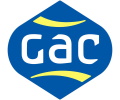International Standard for Marine Fuels (Class F) — Specifications of Marine Fuels ISO 8217. The 2024 revision is about to be published

Michael Banning, a fuel specialist at Brookes Bell, has prepared an article summarising the forthcoming changes to ISO 8217 and unveiling important details such as the expansion of the specification from two to four tables, the requirement that the fuel shall be free from Organic Chlorides and many other amendments.
Mr. Banning is a Chartered Marine Engineer with extensive experience in the marine industry. He is an active member of ISO TC28/SC4/WG6 Classification and Specification of Marine Fuels amongst other technical committees. Mr.Banning has assisted the industry in improving overall fuel quality to mitigate risks onboard. He was involved in the 2017 revision of ISO 8217 and PAS 23263 in the run-up to 2020 and has participated in the 2024 revision of the marine fuel quality standard.
ISO 8217:2024: What Will It Mean for the Maritime Industry?
ISO 8217 has been the definitive international standard for bunker fuel specifications since 1987 and has undergone multiple revisions in the intervening period. However, the latest revision ISO 8217:2024 promises to be the most wide-ranging and impactful yet. Brookes Bell takes a closer look…
What is ISO 8217?
ISO 8217 is a specification created by the International Standards Organisation (ISO) setting out the requirements for both distillate and residual marine fuels. The specification also sets out the tests that should be carried out to determine whether a sample meets those requirements.
Given the ubiquitous use of bunkers throughout the global maritime industry, this has been a standard of pivotal importance.
However, the last major revision of the ISO 8217 standard occurred in 2017. Historically there has been a new version of the standard every seven years, with each successive standard reacting to changes and feedback from the industry, for example the lowering of Aluminium plus Silicon levels from 80 mg/kg to 60 mg/kg or the introduction of further cold flow characteristics for distillate grade fuels.
Time for change
Since then, the regulatory environment has changed drastically, with transnational bodies such as the IMO setting ambitious standards for the reduction of greenhouse gas emissions from shipping.
In particular, the rise of fuels from synthetic and renewable sources has posed a challenge to multiple stakeholders throughout the industry, from bunker traders and brokers to vessel operators and engineers.
The real catalyst for review was IMO 2020 – where a maximum 0.50 mass % Sulphur was introduced for all ships from 1st January 2020. This resulted in the ISO/PAS 23236 which was completed in Q4 2019. Given the short time frame to introduce a new standard (IMO 2020 was only confirmed in 2018), and given the fact that the fuels, which became VLSFO, did not exist, PAS was created to give best guidance to the industry based on the perceived issues of these new low sulphur blends.
Following the completion of ISO/PAS 23236:2019, the working group reconvened to review and revise the current standard. This working group – ISO/TC 28/SC 4 WG6 – has been overseeing what will be the seventh edition of the standard, ISO 8217:2024.
This working group consists of over 100 experts, each of whom represent their country (and their country’s interests through National Standards Bodies), the same experts come from industry and represent:
- Ship owners.
- Ship operators.
- Fuel testing services.
- Engine and equipment manufacturers.
- Fuel producers and suppliers.
- Additive suppliers.
- Classification societies.
- Multi-disciplinary technical and scientific consultancies.
- National standard bodies.
At the start of 2020, the working group reconvened and continued to monitor the ‘new’ VLSFOs being supplied in the market, with all members contributing to quality characteristics and feeding back to the working group on any issues encountered. Based on this feedback the group was able to implement the changes to ISO 8217:2024.
How does ISO 8217:2024 differ from previous revisions?
When we mentioned at the outset of this article that ISO 8217:2024 represents one of the largest revisions to the standard yet, it wasn’t hyperbole.
From an overarching perspective, the new standard is based around the following points:
- The wider variety of fossil fuel blends now being used across the maritime industry.
- The new standard takes into account experiences to date with 0.50% sulphur fuels (e.g. very low sulphur fuel oils VLSFOs).
- The inclusion of drop-in biofuels (and the role they play as a driver of greenhouse gas reductions).
On a more specific basis, the most notable change under ISO 8217:2024 is the expansion of the specification from two to four tables.
These four tables will be as follows:
- Table 1 – Distillates (including Fatty Acid Methyl Esters (FAME) up to B100).
- Table 2 – Residual fuels (with sulphur content of <0.50%) – VLSFO. Table 3 – Bio-residual marine fuels. Table 4 – Residual fuels (with sulphur content >0.50%).
Under ISO 8217:2024, Table 2 and Table 3 are the new tables added to the standard.
How else is ISO 8217:2024 different from ISO 8217:2017?
In addition to these changes, the current final draft – ISO/FDIS 8217 – sets out the following differences from the previous, sixth edition:
● The scope has been updated.
This is to include components (products) from petroleum, synthetic and renewable sources.
● General requirements – Clause 5 has been amended.
Examples include Clause 5.1, which covers the compositional variations allowed for FAME and renewables (such as paraffinic diesel). Another example includes Clause 5.2 regarding jeopardizing the safety of the ship, adversely affecting machinery or harmful to personnel, and Clause 5.3 has reference to Organic Chlorides.
● Changes to the distillate fuel specifications have been added, including:
- The requirement to report the fatty acid methyl ester(s) content (FAME) of DF grades has been changed, allowing up to 100%.
- The distinction between winter and summer quality for cloud point and cold filter plugging point has been removed.
- The requirement to report the net heat of combustion for DF grades has been added.
- A minimum cetane number requirement for DF grades has been added.
- The requirement for oxidation stability for DF grades has been added.
Table 2 is now a table exclusively for VLSFO.
○ There are now minimum viscosity requirements for VLSFO, a fuel that has a lower viscosity than traditional HSFO. This has been introduced to add further protection for the end user. If you order a 380cSt fuel you now have a minimum viscosity of 120cSt, ensuring that no changes are required to purifier settings.
○ Stability test methods have been expanded, with reporting requirements for TSA and TSE, with a maximum limit only being set for TSP, meaning this is the only method suitable for measuring stability in VLSFO.
● Table 3 is new and is for Bio-residual marine fuels – bio blends.
ISO 8217:2024 allows up to 100% renewable content.
There are the same requirements for stability as Table 2.
The FAME content of the blend must be reported.
There is a requirement to report the Net Heat of Combustion.
● Table 4 is HSFO.
Previously Table 2.
Same minimum viscosity requirements as Table 2.
Allows sediment tests by TSP or TSA.
Understanding ISO 8217:2024
As the points above make clear, the seventh revision of the ISO 8217 standard introduces sweeping changes – changes which will be imperative for stakeholders to both understand and implement.
To help stakeholders understand the new standard, CIMAC (International Council on Combustion Engines) will be publishing a series of guidance documents, including an FAQ briefing.
The way ahead
So far, so good. But what will the implementation of ISO 8217:2024 look like? As one prominent fuel testing company pointed out in a recent data release, only 17% of ship operators are using the current standard – ISO 8217:2017. Indeed, there is even evidence of operators still using even older iterations e.g. ISO 8217:2005.
If the new standard is to be truly effective and help the maritime industry meet its aim of reducing greenhouse gas emissions, adoption must be key.
It’s for that reason that initiatives such as the provisional national standard WA 2:2022 (Singapore) are so important. Such standards allow both regulatory and standards bodies to collaborate with industry to prepare for the introduction of larger changes such as those embodied in ISO 8217:2024.
Source: West of England P&I Club

 Hellenic Shipping News Worldwide Hellenic Shipping News Worldwide, Online Daily Newspaper on Hellenic and International Shipping
Hellenic Shipping News Worldwide Hellenic Shipping News Worldwide, Online Daily Newspaper on Hellenic and International Shipping





















 PG-Software
PG-Software